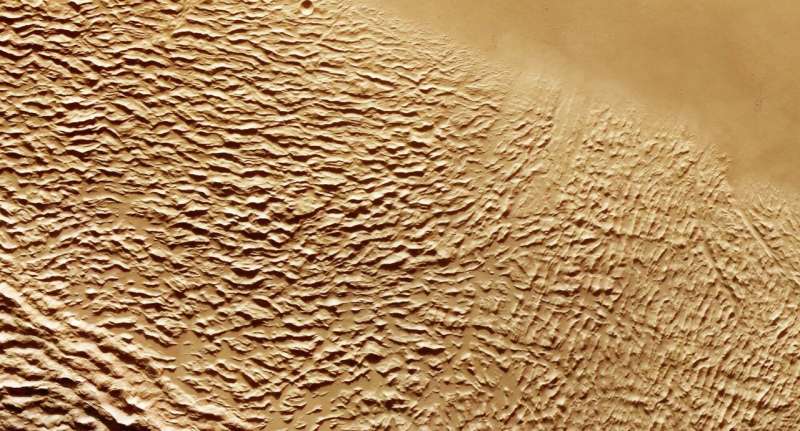This article has been reviewed according to Science X's editorial process and policies. Editors have highlighted the following attributes while ensuring the content's credibility:
fact-checked
trusted source
proofread
Planetary size and associated cooling rate may explain why Mars died while Earth survived

We know of Mars as the red planet, for its surface and atmosphere is caked in endless swirling dust of rusted iron, the rusting action provided by the always-eager oxygen. But this was not always so.
As attested by robotic emissaries that we have sent to that planet for over half a century, Mars was once a vibrant (if not verdant) world. We see the evidence for water everywhere we look: ancient flood plains, seabeds, alluvial fans, all of it. If I were to give you two pictures, one from the surface of Mars and one from one of Earth's deserts, you could not tell the difference.
While Mars may not have had as rich an abundance of liquid water as the Earth, we do know with confidence that the world once hosted vast oceans, long, meandering rivers, and a weekly forecast featuring rainy, overcast, dreary days.
We do not yet know if the right chemicals found the right combinations at the right times to begin climbing the ladder to life on that planet, but we do know that if you could transport yourself back billions of years, to the early days of our solar system, you would find two Earth-like planets orbiting within the habitable zone of our star.
But Mars was born with a flaw, a crippling birth defect that fated it to snuff out any hope for life on its surface. The planet Mars, though it gleams with red anger in our nighttime skies, is small. By mass it's roughly only 11% that of the Earth. That small mass means that its core cooled off much faster than it should have.
All worlds are warm. Some of the heat comes from the decay of radioactive elements, elements mixed within the primordial gas cloud that condensed long ago to form our solar system. But they also retain heat from the process of formation itself. Every planet that we see today is the end result of collapsing a large, diffuse cloud of gas and dust into a relatively compact volume. That collapse causes friction, and that friction generates heat.
That heat is trapped inside the body of a planet as it forms. The only way for that heat to escape is through the planet emitting radiation into the vacuum of space. As methods of heat transport go, radiation is by far the most inefficient (for a gruesome but tangible example, if we were to toss your body into the vacuum of space far away from the sun, it would take several hours for you to freeze). As the planets emit infrared radiation, they slowly release the heat from within and cool off.
Earth still has plenty of heat to spare, for two reasons. One, our planet is larger than Mars, and so it acquired more heat during its formation. Second, the heat of our planet is contained within the volume of its body, but the heat can only radiate from its surface. If you double the size of a planet, its surface area quadruples, but its volume becomes eight times larger. Larger planets release heat more slowly than smaller ones. In other words, we are much more inefficient than Mars when it comes to removing our heat.
Our heat keeps the core of our planet molten, and it's there, buried thousands of miles beneath the surface, where the complex twisting of charged elements like iron, worming against each other in a great churning fire, generate our planet's magnetic field. That magnetic field deflects the onslaught of the solar wind, the ever-present rain of charged subatomic particles streaming from our sun, keeping our atmosphere safe. Without that protective magnetic field, we would lose our air like dandelion seeds in the breeze.
This was Mars's flaw. Born too small, within a billion years its core cooled and solidified, its magnetic field becoming feeble. Without that protection, Mars lost its atmosphere. Without that atmospheric pressure, the water on its surface boiled and evaporated into gas, where it too got caught up in the solar wind and blown out of the solar system. That water has now joined its brethren in the interstellar wastes, never to be seen again.
With that, Mars died, along with any hope of life on that world.
Provided by Universe Today





















